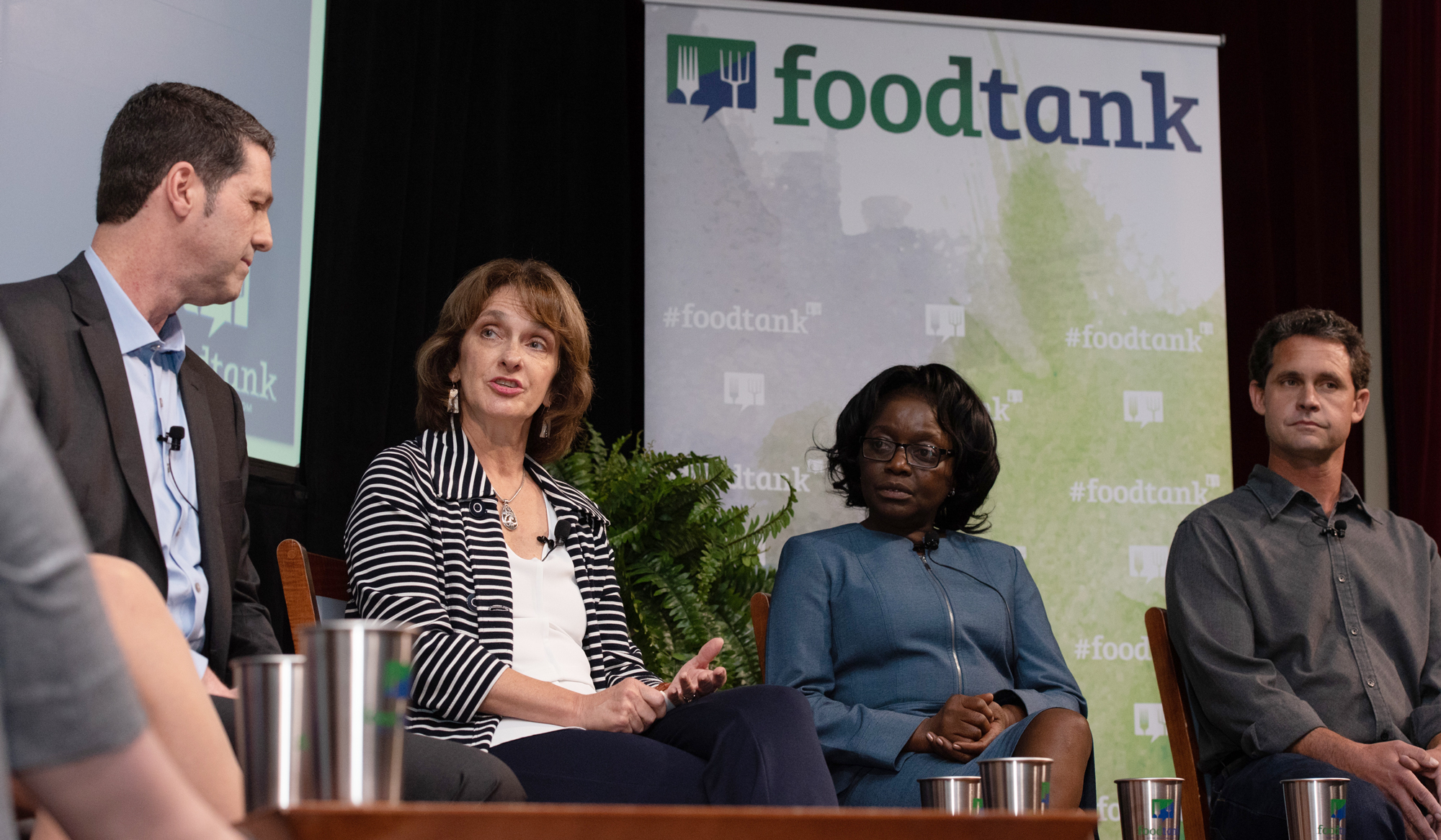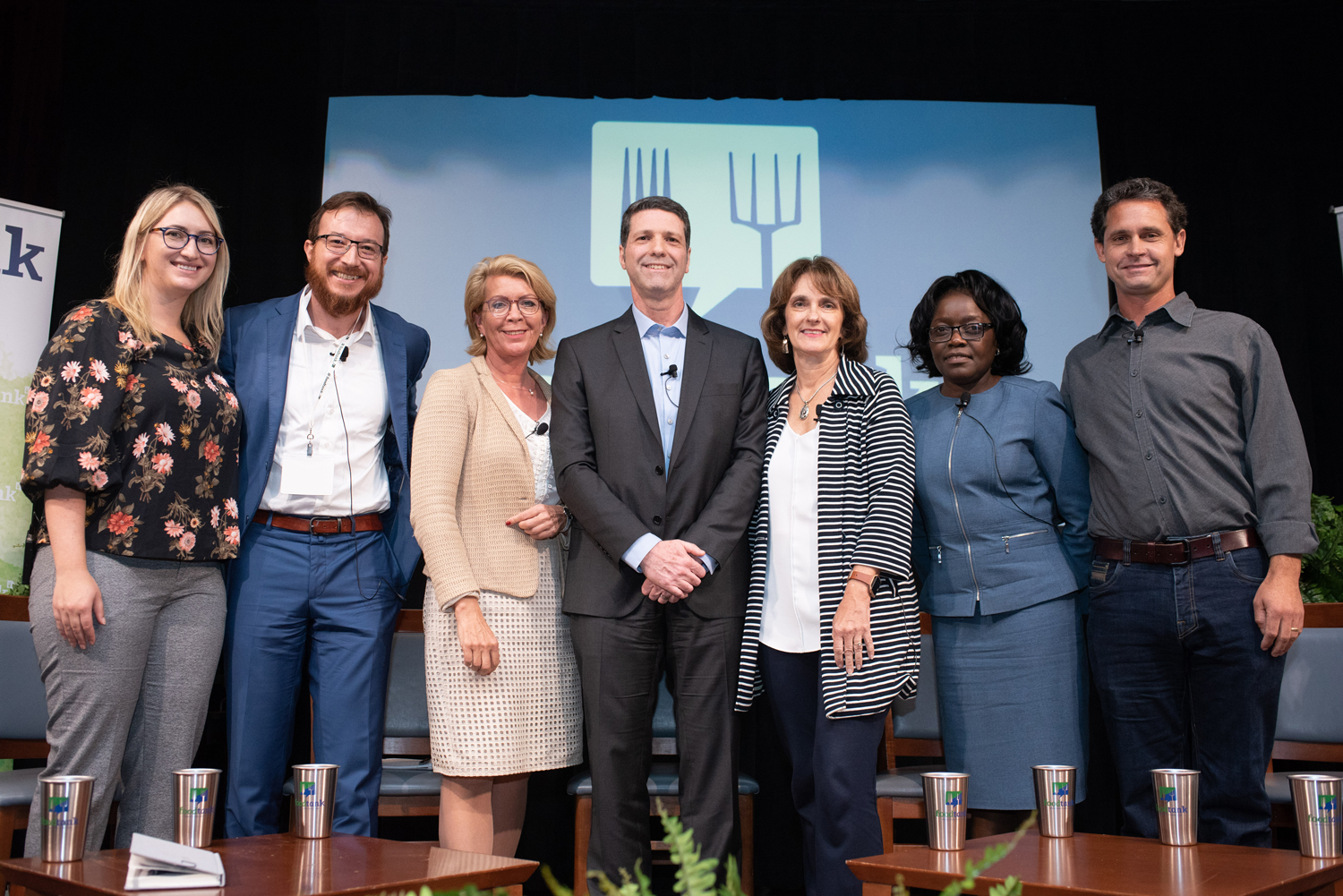
Food waste summit looks at on-farm food losses in panel with domestic, international insights
Solving problems of on-farm food loss and consumer food waste was the focus of an event at New York University last week, convening more than 30 food leaders for substantive discussions — including Elizabeth Mitcham, director of the Horticulture Innovation Lab.
The Food Tank Summit was also broadcast online, with the event trending on Twitter and more than 62,000 viewers of the livestream video.
"Food waste used to be a problem that was really, really easy to ignore,” said Dani Nierenberg, Food Tank president, during opening remarks. “Knowledge and understanding of food waste is now at an all-time high.”
Speaker topics ranged from plant breeding to restaurant innovations. The topic of on-farm food losses, specifically focused on crops that are lost after harvest and before sale, warranted a lively discussion that included Mitcham and Jane Ambuko, one of the Horticulture Innovation Lab’s research partners in Kenya. Joining them on the panel were representatives from a farm in New York, a food industry technology company and two international development organizations.
Fresh produce grade standards, market connections present a challenge
One issue that Mitcham highlighted is how grade standards for fresh produce quality can contribute to food losses.
“I believe the grade standards play an important role in the market system... so I don't think they should be done away with,” she said. “But unfortunately for many crops there are standards based on appearance quality and size that may have little to do with the nutritional quality or eating quality of that product.”
Mitcham frequently interacts with the American produce industry, as a postharvest specialist with UC Davis and UC Cooperative Extension. She told a story about visiting a California peach orchard after harvest, where she and fellow researchers were enjoying ripe peaches from the trees while they talked with the grower. When they asked about the rest of the fruit being harvested, the grower explained that the remaining fruit would not be picked because the peaches did not have enough red color to earn high enough market prices to warrant picking.
Her experiences working with farmers in Africa, Asia and Latin America added a global perspective to Mitcham's comments on food loss and waste, finding similarities and drawing contrasts as well.
“I think one of the biggest challenges in terms of produce loss or food loss is the connection that farmers have with their market,” Mitcham said. “In the developing world oftentimes the farmers don't have the confidence that the market will pay them for doing a better job, for investing in better ways of doing things.”
Video of the On-Farm Food Losses panel discussion at the 2018 Food Tank Summit in New York. (Find it on YouTube.)
Making cold chain and dry chain technologies available to smallholder farmers
Sitting next to Mitcham on the panel was Dr. Ambuko, senior lecturer from the University of Nairobi and a frequent collaborator on Horticulture Innovation Lab research in Kenya.
Ambuko discussed ways she is working to provide tools for farmers to cool their fresh produce and build a cold chain in rural Kenya, including low-cost cool storage such as the charcoal cooler and zero-energy cool chamber, both of which make use of evaporative cooling. She has also championed use of the CoolBot in Kenya, a device created by an American farmer that can turn an air conditioned room into small-scale cold storage at lower costs than typical refrigeration.
“It's not that we don't have technologies to address the issues on the farm,” Ambuko said. “The technologies are there, but how do we make them accessible and affordable for the smallholder farmers in Africa?”
Mitcham agreed with the need to establish cold chain capacity in many countries — and brought up the “dry chain” as well, for dried foods.
“We have products that are dried and intended to be stored stable and dry, but then are stored in jute sacks … and we’re getting mold and a lot of losses,” she said. “The magnitude of losses due to a lack of cold chain and dry chain are really astounding.”
Systems approach needed to solve postharvest losses, food waste
Tobias Grasso, a panelist from a company called Sealed Air, agreed with the need for a systemic approach.
“I think the solutions are in the connections of the chain. I don't think the farmer alone is going to do anything or the retailer alone is going to do anything,” Grasso said.
Speaking after the panel, Marion Nestle, New York University professor, echoed the emphasis on externalized costs and misdirected productivity.
She pointed out that in the United States, the food supply has about 4,000 calories available per day for every man, woman and child — though on average, adults only need to consume about 2,000 calories per day.
“The root cause [of food waste] is overproduction in our food system,” Nestle said. “We set up a food system where the system is trying to get you to eat more than you need, to buy more than you need and therefore to waste more than you need — that’s how the system works.”

More information:
- Winters Express article: Davis postharvest expert speaks at national summit on food waste
- FoodTank article: Solving On-Farm Food Loss
- Horticulture Innovation Lab research projects related to postharvest practices
- How the CoolBot is helping farmers reduce waste around the world
- Information resources about the CoolBot
- Dry chain technology resources: DryCard, chimney solar dryer, drying beads
- Resources from Horticulture Innovation Lab researchers on postharvest handling
- Mitcham discusses postharvest quality on ABC News
